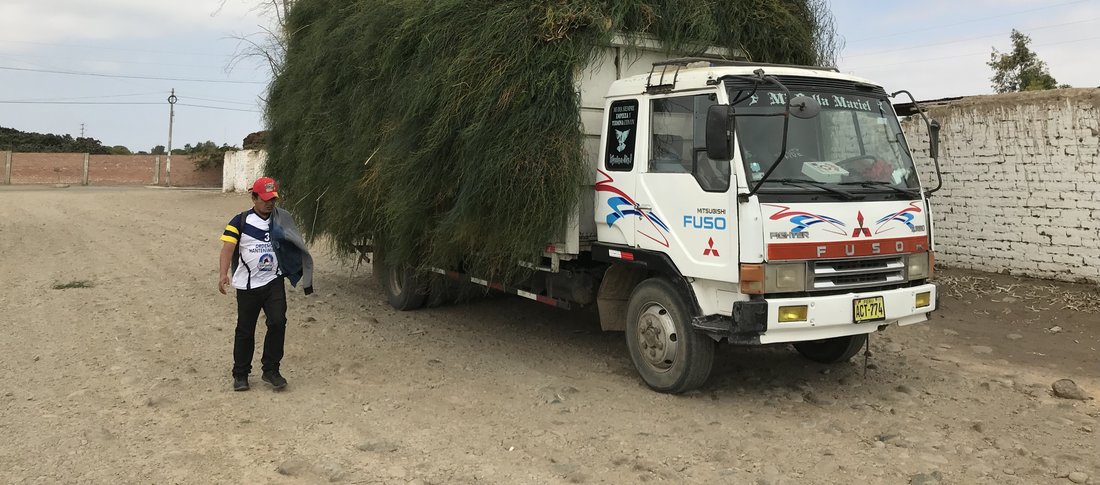When we discuss the largest dairying regions of the world, South America isn’t often named. This is no surprise when we consider the climatic and geographical challenges across the continent; which leads to varying production systems and output across each country.
To see these differences up close, our Global Technical Manager, Dr Richard Kirkland, took a visit to Peru.
He explained: “The dairying system in Peru is certainly worthy of attention with production systems, and particularly diets, being different from what I have experienced in any other region in the world.”
Developing markets
Although the total dairy cow population is just under 900,000 head, it’s estimated that less than one-third of these are in ‘organised’ farm set-ups.
Generally, many farms are seeking to expand and develop but a lack of nutritional knowledge hampers major improvements. And, coupled with a poor forage base, animals are challenged to achieve the most crucial aspect of intake – energy.
At Volac Wilmar, we have a strong interest in these developing markets by providing knowledge and nutritional support to improve the dairy sector.
Intensive labour
In Dr Kirkland’s experience, “Unique to Peru, is the nature of the farms. Many of the large farms - up to 3,000 cows on the largest farms - are part of the large vegetable growing industry, established to make use of ‘waste’ from that side of the business.
“The common base forages on the northern farms are asparagus tops remaining following the harvest of the valuable asparagus and maize stems post-removal of cobs for human food.”
He continues, “The extent of manual labour involved is particularly striking. Lorries arrive daily at each farm, with fresh forage being loaded and unloaded by hand and the maize being manhandled into a chopper before feeding. Other vegetable ‘forage’ by-products include artichokes and peaches. Diet feeders are the norm on these larger farm units to mix a variety of ingredients.
“No surprise then that the primarily Holstein cows - with US genetics common - fail to consume sufficient energy, and with low fibre and high starch diets, milk fat of 3.6% and below, and in some cases milk fat: milk protein inversions are common – clear indications of low energy intake and the ‘wrong’ type of energy, leading to acidosis and ketotic influences.”
Challenges
Alongside fairly extreme heat stress in the summer months, intakes are challenged. This exacerbates metabolic issues and, not uncommon to our local industry, maintaining cow fertility presents another major challenge.
Whilst farmer-reported milk yields of 8-10,000 litre plus per lactation initially sounds impressive, this is often achieved with particularly-extended lactations; in some cases farms reporting over 200 days open.
Lessons to learn
While farmers must work with what’s available in the region, concentrating on the basics of nutrition in terms of balancing the macro-nutrients and energy supply from different sources pays dividends.
Dr Kirkland recalls: “Ensuring feed is pushed up and available to cows was in some cases absent on farms experiencing real issues, and supplementation of the low-energy forages was not balanced to achieve maximum likelihood of success.
“Fatty acid nutrition, our key specialism, reflected what was commercially available at the time rather than based on the most-appropriate supplement type as proven by scientific research – ‘high-C16’ supplements in triglyceride form are not a good buy due to the well-proven poor digestibility with this type of supplement, especially through the early lactation period.
“Coarse-grained calcium salt supplements support effective transfer of the unsaturated oleic (C18:1) fatty acid through to the small intestine required to improve fat digestion and influence nutrient partitioning for improved body condition and fertility; the key fatty acid for early lactation cows. Fine-grained products as currently available are much less effective in this regard.”
Dr Kirkland notes, “Feedlot-type corrals constructed from low-cost materials are the norm and the degree of uniformity from farm to farm in terms of construction and diet types is striking!”
With one milk processor having a largely-monopolistic position in the Country, increasing milk price at farm level is somewhat difficult. This increases the emphasis on getting nutrition right to maximise returns from the contract. In particular, this means increasing milk fat percentage which can be encouraged by feeding of the high free oil by-products, careful control of starch and suitable rumen-protected fatty acids at different stages of lactation.
Concluding on his experiences Dr Kirkland says, “Peru offers a great example here of a need to concentrate on doing the basics right – when lack of megajoules is the key factor, maximising energy intake is the factor to work on and production and fertility performance will improve."
Over to you...
If you have any experience of dairying overseas, we’d love to hear from you on Facebook and Twitter.
You may also be interested in:
Dairying Down Under: what’s it like?
